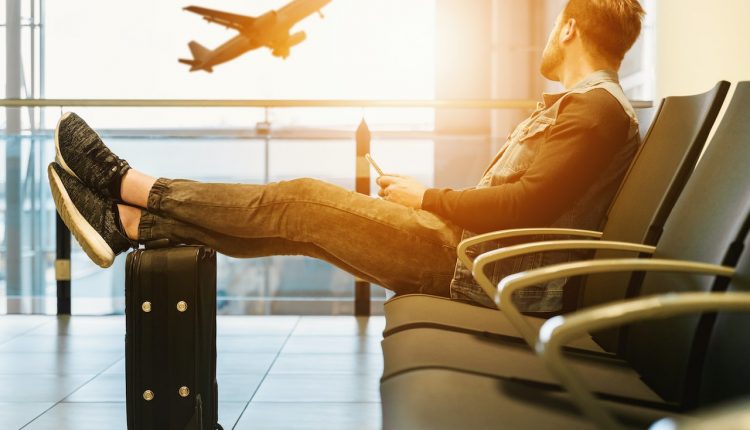Special report: Liverpool Airport is seeing a post-pandemic boom with airlines signing up and existing carriers raising capacity – but will the net zero carbon push herald a new era of higher fares? Tony McDonough reports
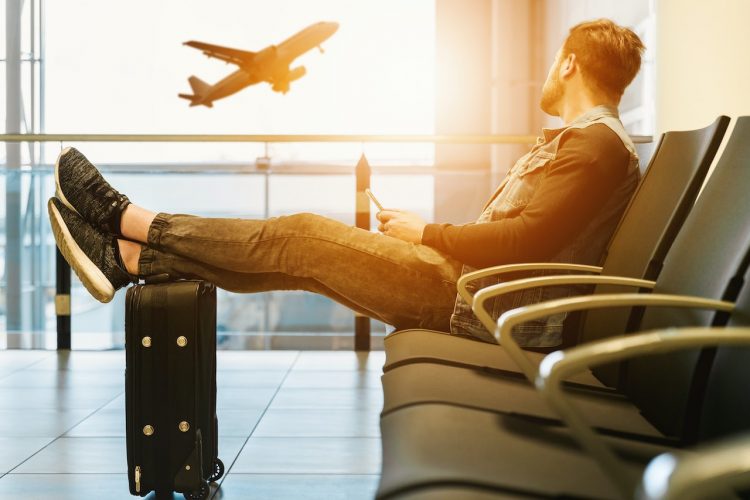
Back in the 1980s the idea that people on modest incomes could hop on a plane for a weekend in Paris, Barcelona or Rome was almost unthinkable.
Air travel for the average person was eye-wateringly expensive. A short-haul flight to Europe in the early to mid-1980s could cost hundreds of pounds – more than £1,000 in today’s money.
Most people had to settle for package holidays to Benidorm – or a week in a caravan in North Wales.
In 1988 Ryanair launched its first flights from Liverpool John Lennon Airport (LJLA) to and from Dublin. Along with easyJet, Ryanair ushered in the era of low-cost flying.
Based on a model of high load factors (percentage of seats filled) and fast turnarounds they pushed air fares down to insanely low levels. Ads offering seats to multiple destinations for as low as £5.99 were not uncommon.
It opened up a whole new world of travel possibilities and people loved it. In Ryanair’s first year at Liverpool Airport it carried just 20,000 passengers. Since then it has carried 35m passengers to and from Liverpool.
In February this year it announced an £80m investment at Liverpool with four new routes, taking the total to 31. During the year to the end of March 2024 Ryanair predicts it will see more than 2m passengers fly to and from Liverpool.
In an interview with LBN, Ryanair’s head of communications, Jade Kirwan, said: “We have now flown 35m passengers. It is a nice milestone to reach.
“When you look back 20,000 a year is miniscule in comparison to what we carry now. We were of course much smaller then. When you see we will carry 2m passengers this year – that is 25% higher than last year. It is a massive rise.”
Ryanair’s expansion was one of a string of positive announcements for LJLA in 2022 and 2023. Its main rival easyJet has upped its capacity by almost 20%.
In late April Aer Lingus returned to Liverpool for the first time since 2016 with a new route to Dublin. Emerald Airlines, which operates Are Lingus’s regional services, will offer 11 departures a week to the Irish capital.
This has given LJLA its third global hub link. German carrier Lufthansa began its hub link between Liverpool and Frankfurt in May 2022 and has since increased frequency. It offers onward flights to multiple global destinations.
Icelandic airline PLAY also offers ‘seamless’ onward connections to US cities Washington, Boston and New York via Reykjavik.
And in a major coup in May Liverpool announced Jet2 and Jet2 Holidays would be operating from Liverpool for the first time in their history from 2024. They will offer 20 summer routes and eight winter routes, creating at least 200 new jobs.
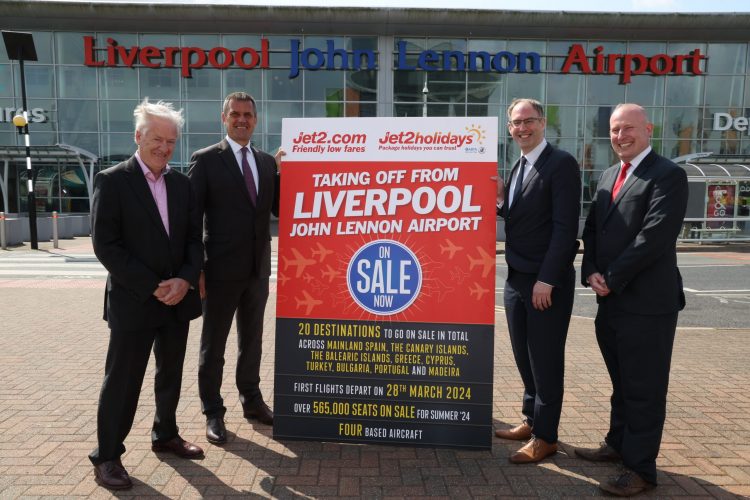
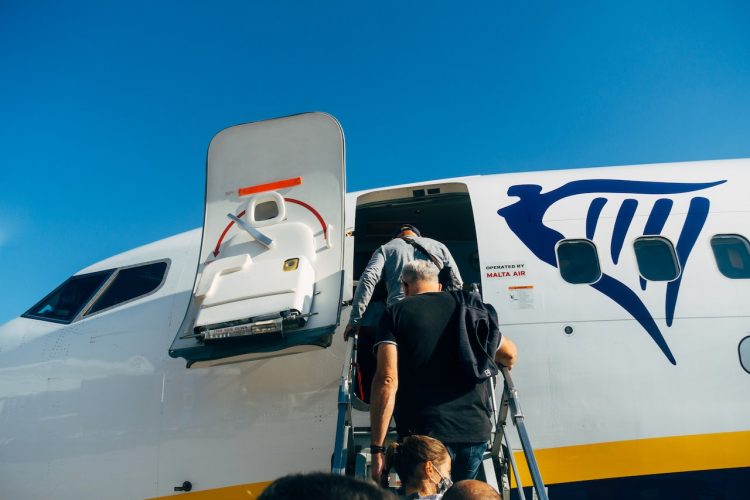
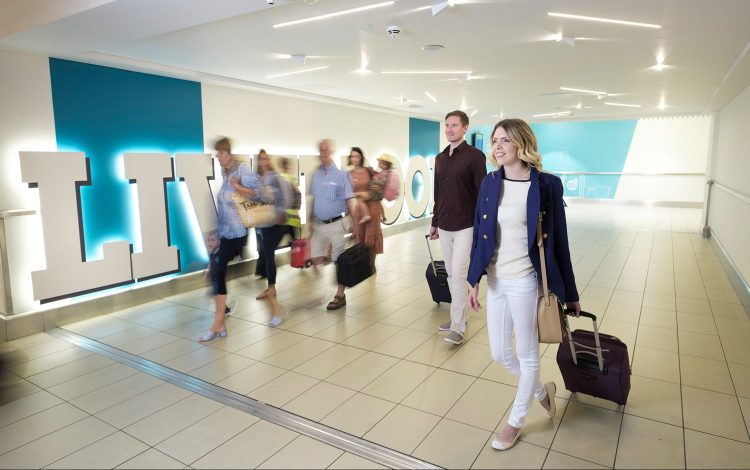
It is a great recovery for the airport from the dark days of the COVID pandemic. In the 12 months to the end of March this year it handled 3.77m passengers, This is still down on the 4.8m for the last pre-COVID year but well up on last year’s figure of £1.6m.
In May, LBN reported that the airport had agreed a deal with Liverpool City Region Combined Authority to defer repayment of £30m of a £34m lifeline loan agreed in the summer of 2020.
LJLA’s change in fortunes reflects the global recovery in air traffic since the pandemic. However, there are further clouds on the horizon that could hamper the growth of the sector in the coming months, years and decades – fuel costs and climate change.
Russia’s invasion of Ukraine in early 2022 sent fuel prices soaring across the world. Fuel is typically the biggest overhead for airlines – 25% to 30% – and this has put an upward pressure on fares. They have come down again this year but remain well above levels of the past decade.
Most airlines practice what is called hedging. This means they will agree a fixed price for their fuel six or 12 months in advance. It helps smooth out the spikes but runs the risk of locking in a high price if the daily price goes down.
Ryanair is 85% hedged but still expects its fuel bill to rise by $(US)1bn in the current financial year.
But even if fuel costs eventually settle back at lower levels the commitments made by the aviation sector to cut carbon emissions are likely to add significantly to its costs over the next few years.
It can be argued that aviation gets an unfair rap on carbon emissions. It accounts for just 2.5% of human emissions, similar to global shipping. This is dwarfed by road transport, energy generation and industrial processes such as steel manufacturing.
However, for the general public, aircraft are a very visible representation of the burning of fossil fuels. Ryanair’s Jade Kirwan told LBN: “Aviation has become a poster child for emissions but if you look at cruises they are much more damaging than planes.
“In the past couple of years we have taken delivery of game-changing new aircraft that are much more environmentally friendly. We have also had four different SAF (sustainable aviation fuel) suppliers lined up as well – we are coming on leaps and bounds.
“London to Edinburgh is less than a one-hour flight but it’s a 14-hour drive and an eight-hour train journey. So there is a place for aviation.”
In October 2021 the International Air Transport Association (IATA), which represents all the world’s airlines, passed a resolution committing the industry to achieving net-zero carbon emissions from their operations by 2050.
This pledge brings air transport into line with the objectives of the Paris agreement to limit global warming to 1.5°C. Key elements of the emissions reduction strategy are:
- The use of Sustainable Aviation Fuel (SAF), sourced from feedstocks that do not degrade the environment or compete with food or water (65%).
- Investment in new aircraft technology, including radical new aerodynamic and alternative propulsion (electric or hydrogen) solutions (13%).
- Continued improvement in infrastructure and operational efficiency, with a particular focus on improved air traffic management (3%).
- The use of approved offsets including carbon capture and storage technology (19%).
According to the World Bank there may be as many as 2.5bn passenger journeys made in the world in 2023 – still well down on the 4.5bn passengers journeys in 2019. However this is projected to exceed 4bn by 2025, 8bn by 2040 and 10bn by 2050.
The expected carbon emissions on a ‘business as usual’ trajectory over the 2021-2050 period is approximately 21.2 gigatons of CO2. Mitigating that amount of carbon will be a huge technological challenge for the industry.
Competitive airlines such as Ryanair will do their best to keep fares as low as they can but it is inevitable the rising cost of net zero compliance will put upward pressure on air fares.
Frankie O’Connell, reader in air transport at the University of Surrey, recently told the FT: “Short-haul flying has roared back to life because of pent-up demand. They must contend with fewer, stronger carriers.
“Ryanair’s flights were about 80% full a decade ago, but seats are now scarcer. Not only can such airlines charge more, they will soon have to.”
There is a hope hydrogen-fuelled aircraft will help cut emissions. Airbus, which operates a giant factory in Deeside, hopes to have a hydrogen-powered commercial aircraft in the air by 2035. Easyjet is a partner in that project.
But the infrastructure costs will run into the hundreds of billions so it will only be, at best, a partial solution. Much fait is also being placed in sustainable aviation fuel, made from waste oils, fats and non-food crops.
In December 2022, LBN reported that a £16.5m facility is to be built at Ellesmere Port that will convert black plastic bin bags into ‘sustainable’ fuel for passenger jets.
Fulcrum BioEnergy has secured funding from the Government’s £165m Advanced Fuels Fund to build its NorthPoint facility at the Stanlow refinery in Ellesmere Port, close to the River Mersey.
In 2021, easyJet became the first airline to operate flights out of Gatwick airport using a mixture of SAF (30% of the blend).
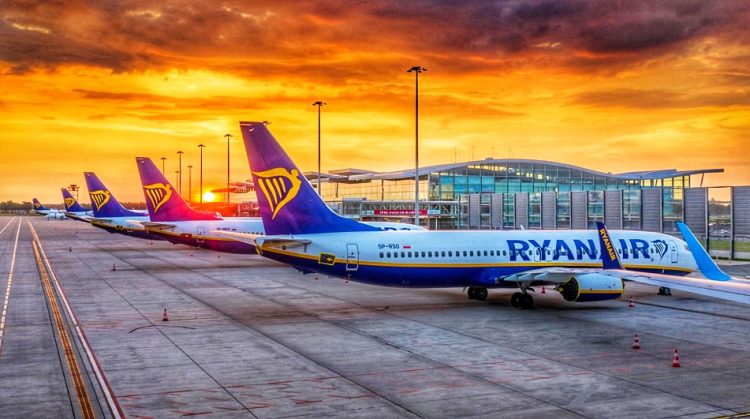

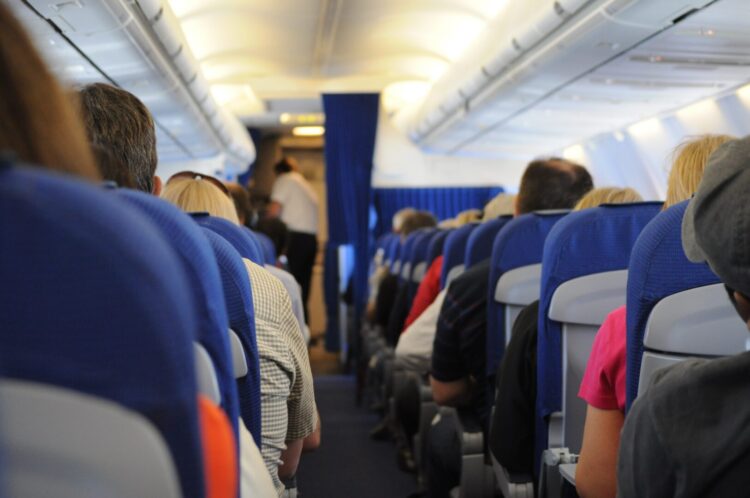
It has also signed a Letter of Intent with Airbus to support the development of carbon removal technology. This captures carbon dioxide directly from the atmosphere and then stores it securely and permanently underground.
Again, all this investment is likely to feed into higher fares. Aviation analyst John Strickland from JLS Consulting, told the BBC that fares could increase even more, with a family of four seeing costs rise by another £20 or £30.
But he added this was unlikely to be enough to put people off flying. He explained: “If you talk about, let’s say, a 10% increase or even a 15% or 20% increase, we’re only talking about a few pounds, maybe five, six, seven in increased costs.
“While that’s not nothing, I don’t believe that’s going to be a showstopper in terms of demand.”
Ryanair’s Jade Kirwan acknowledges that rising inflation has pushed the prices of most things up, including air fares. But she insisted to LBN that Ryanair is determined to keep offering prices low enough to keep people flying.
“Everything is more expensive. Fuel costs have gone up and inflation has hit everyone in the pocket. That is not just the case in the UK and Ireland but across Europe,” she said
“We all know that when we walk into the supermarket now we will walk out with a bill that is twice as much as we had before. It is hitting all sectors and aviation is no exception.
“All the operational costs in the background have gone up. Fuel is obviously our biggest cost.
“But we are still offering seat sales on a local level regularly. Our latest is seats from £29.99 whereas before you might have had the £5.99 level, which is ridiculously low when you think about it in the current climate.
“But that doesn’t mean that low fares are gone. I think a £30 flight is pretty affordable. Compared to say train ticket prices it’s pretty good.
“What makes Ryanair such a success story is that we have managed from very early on to keep our cost base on the floor. That is what allows us to be so competitive.
“If you look at the wider European scope we have the lowest fares and we are reducing them further at the moment. And you look at our closest competitors then there is a huge difference in fares – and that is widening.”
Ryanair owns all its own aircraft as opposed to competitors such as easyJet who lease as well as own planes. Jade also said the deals it negotiates with airports such as Liverpool also help keep fares down.
She added: “Others airlines are having to lease aircraft and those prices are out of their control. Ryanair doesn’t have that problem.
“There are a number of things we look at when we decide where we will base aircraft. That isn’t a decision we make willy-nilly so the fact that we have increased the number of aircraft at Liverpool is testament to the relationship we have there.
“We always look at consumer demand and airport charges and how efficiently the airports are run. So we want to make sure our passengers have a positive experience from the minute they set foot in the airport. Liverpool offers us that.”

